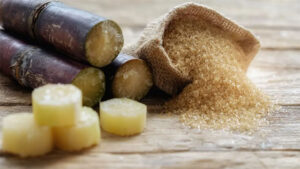 Prime Minister John Briceño says this year’s sugar crop will be one of the worst in recent years after the Fusarium Wilt disease ravaged cane fields here.
Prime Minister John Briceño says this year’s sugar crop will be one of the worst in recent years after the Fusarium Wilt disease ravaged cane fields here.
The Belize Sugar Industries (BSI) in confirming the situation, described this year’s performance as one of the worst in over three decades.
“The total cane received is just under 884,000 metric tons. That’s a low for us,” BSI director of finance, Sean Chavarria, said, adding that the only comparable year in recent history was 2020, which was still higher despite coming on the heels of the 2019 drought.
Chavarria explained that the Tons of Cane to Tons of Sugar (TCTS) ratio, a key measure of efficiency, stood at approximately 11.1 to 11.2 this season, noting “that’s one of the lowest we’ve seen since the 2010 crop”.
After liquidation, total sugar production is expected to come in at just under 79,000 metric tons, a figure not seen since 2008, making this season one of the lowest-producing crops in 35 to 40 years.
“It’s not a very good crop. From our standpoint, it’s been very challenging,” Chavarria said, making reference also to a mix of contributing factors including adverse weather, widespread disease, and manpower shortages.
“We had long stops due to heavy rains in February and March, totaling 12 days. There was also a lot of ‘out of cane’ scenarios where farmers struggled to meet milling requirements,” he added.
Prime Minister Briceño said that the effect of it all is that the sugar crop has come to an end and “it will be one of the worst sugar crops we have had in recent times”.
He said what is even worse is that the tons of cane to produce one ton of sugar has been even worse and that the current tons of cane per ton of sugar is 12 tons of cane for one ton of sugar.
“When the cane is really good you are getting nine tons for one ton of sugar. So we are using two tons and a quarter more to make one ton of sugar. So, this is by far the worst we have had in production in recent history since 2011.”
He said the BSI will produce just over 78,000 tons of sugar and for context this will be a significant decline over what was produced last year and 154,000 tons less than what it produced in 2019.
He said that with this year’s production, the industry is projected to earn US$110 million “mostly in foreign exchange, representing a significant reduction to fifty-three million from one hundred and fifty-six point five million dollars generated in 2024.”
“Based on the current sugar price estimate farmers are expected to earn no more than BZ$65 per ton of cane this year,” Briceño said, noting that this represents a reduction of BZ$25 per ton when compared to BZ$90.23 per ton that was paid out last year.
“Our farmers will take home BZ$31 million less than they took home last year,” he added.
The Fusarium Wilt disease, which Prime Minister Briceño described as a “fungus ravaging cane fields,” is one of the most significant threats. Chavarria confirmed that stakeholders are actively assessing the disease’s long-term impact but cautioned, “It might be a little too early to see the full effect.”
But despite the bleak short-term outlook, Chavarria remains optimistic going forward.
“The hope that we have is that our problems are solvable. All these issues can be solved,” he said, underscoring the need for field renovation, access to agricultural credit, and mechanization of harvesting to reduce dependency on labor and increase productivity.
